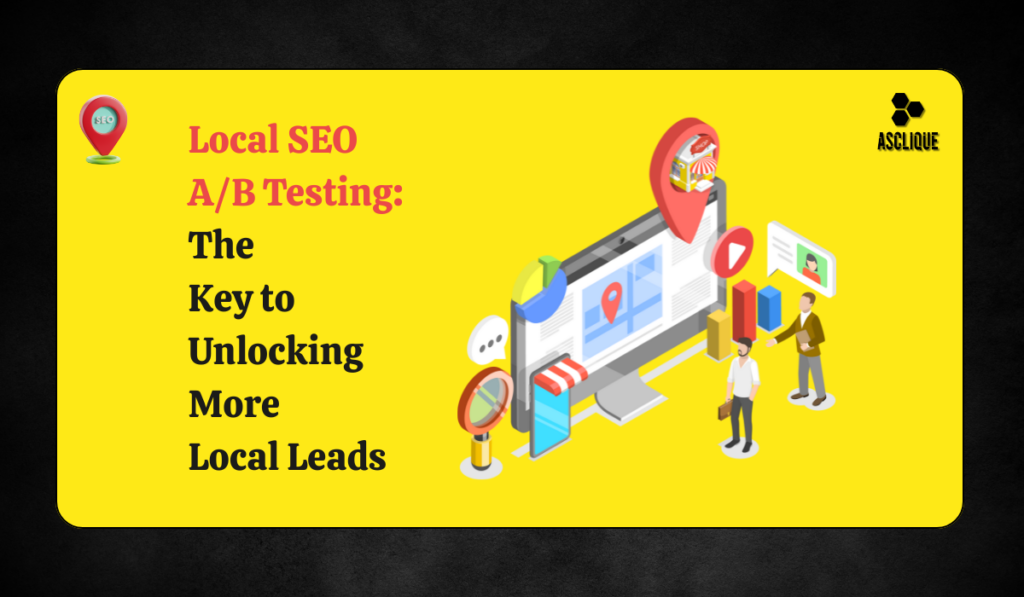It is no longer possible to think of local SEO as an option; businesses relying on foot traffic or geo-target-focused online engagement need it now every day. Digital marketers and SEO agencies pour lots of resources into optimizing Google’s Business Profile, local citations, and local landing pages whereas not much attention is paid to A/B testing.
A/B testing is a comparison between two versions of a website, listing, or element to find which one has better performance. While theoretically, decision-making is based on proven facts, local SEO strategies, on the other hand, should not just be depending on assumptions. Therefore, the intent of our post is to dissect how local businesses and SEO professionals can leverage the process of A/B testing in local SEO to increase visibility, engagement, and conversion.
A/B Testing in Local SEO: What is it?
In local SEO, A/B testing involves creating two or more variants of a local asset—for example, a landing page or Google Business Profile element—and comparing their performance based on a specific goal such as click-through rate (CTR), phone calls, direction requests, or on-page engagement.
Local SEO is unique due to its visibility of local pack rankings and the granularity of local search intent, unlike general SEO, where A/B testing can be challenging due to Google’s opaque algorithms and ranking variability.
The importance of A/B testing for local SEO
- Enhancing User Experience: Testing headlines, content, call-to-actions, and design elements can lead to a better user experience tailored to a local audience.
- Enhancing Engagement Metrics: A/B testing reveals which version of a page or profile gets more actions, such as calls, bookings, or visits.
- Reducing Guesswork: Rather than relying on best practices or intuition, you get empirical data to back your decisions.
- Maximizing ROI: Even microscopic optimizations through testing translate into huge leaps in numbers, in terms of lead generation and conversions.
Elements to A/B Test in Local SEO
Here are some of the key components of local SEO that are ripe for A/B testing:
Google Business Profile (GBP) Elements
- Business Description: Try formats of various kinds and lengths and styles.
- Photos and Videos: Experiment with varying types of images (interior vs. exterior, product vs. team).
- Attributes: Toggle attributes such as “Wheelchair accessible” or “LGBTQ+ friendly” to see if it affects engagement.
- Posts: Experiment with the frequency of posts, type of information (event, offer, update), and call-to-action.
Local Landing Pages
- Headlines and Subheadlines: Test various value propositions against types of geotargeting language.
- CTA Buttons: Put different calls in different places or try different colors and wording.
- Testimonials & Social Proof: Test where these elements are placed and how they are formatted.
- NAP Consistency: Even slight changes in address formatting and presentation could affect legitimacy and local relevance.
On-Site Content for Local SEO
- Service Area Pages: This experiment includes applying localized content such as names of neighborhoods in testing its influence over traffic.
- Internal Linking Structure: Test different options in linkages between local pages.
- Schema Markup: Testing different kinds of LocalBusiness schema to see the effect on SERPs.
Tools for A/B Testing in Local SEO
- Google Optimize (sunset in 2023, but alternatives exist like VWO and Optimizely)
- Google Business Profile Insights
- Call Tracking Tools (e.g., CallRail)
- Google Analytics (GA4 for event tracking and user engagement)
- Rank Tracking Software (e.g., BrightLocal, Whitespark)
These tools can help measure the impact of your A/B tests by tracking user actions, behavior, and rankings.
How to Set Up a Local SEO A/B Test
Follow these structured steps to conduct an effective local SEO A/B test:
Step 1: Define aim
What is it that you intend to improve in this regard? CTR, phone calls, map direction requests, form submissions, etc.
Step 2: Form a Hypothesis
Example: So, the head line changing from “Top Dentist in Chicago” to “Award Winning Dental Care in Lincoln Park” will increase the CTR by 10%;”.
Step 3: Choose Your Variations
Select one only to vary. Do not test many variables simultaneously, so that results are clearer.
Step 4: Segment Your Audience
Use geographic targeting and other segmentation to ensure test group similarity.
Step 5: Conduct the Test
You will then run the A and B versions, get data for two to four weeks and determine if any were statistically significant enough.
Step 6: Results Analysis
Analyze the performance metric using the analytical and testing tools.
Step 7: Roll Out Winning Variant
In case one of the version is completely dominating the other version, just go ahead with 100% roll out.
Best Practices for Local SEO A/B Testing
- Testing the variables alone: Test each effect in isolation.
- Run Tests Long Enough: Don’t stop early; make sure not to use insignificant data.
- Ensure technical accuracy: No duplicate contents or indexing issue during the tests.
- Think about seasonality: Local businesses could probably experience fluctuations of traffic depending on seasons or occasions.
- Write Everything Down: Keep a testing journal for tracking all the hypotheses, changes, outcomes, and lessons.
Shared Problems and Solutions
- Low Traffic Volume: Some local small businesses will not be able to figure out sufficient results statistically. Concentrate on higher-impact variables or aggregate data from many similar locations.
- Ranking Volatility: Local pack rankings can frequently fluctuate. It is best to check over a longer period and not just daily snapshots.
- Data Privacy Regulations: When collecting data from users, make sure to follow both the GDPR and CCPA regulations.
Case Study: A/B Testing Google Business Profile Posts
An agency tested two types of Google Business Profile posts for a local HVAC client:
- Post A: A promotional offer for seasonal tune-ups.
- Post B: An educational post on how to prepare your AC for summer.
Result: Post A generated 60% more direction requests and 40% more phone calls. This led to a strategy shift toward offer-based posts during peak seasons.
Conclusion
A/B testing is an invaluable yet underutilized tool in the local SEO toolkit. By applying a systematic, data-driven approach, businesses can refine their local SEO efforts to drive more meaningful results. Whether you’re managing a single-location business or a multi-location enterprise, consistent A/B testing can reveal insights that transform your local search performance and generate more leads and conversions.
Start small, stay consistent, and let the data guide your path to local SEO success.
FAQs
For how long should I do testing?
A good testing time is about 2-4 weeks running the tests until one has some statistically significant data.
A/B testing influences ranking?
Not if done the right way. Do not create duplicated content and monitor indexing.
The best landing page testing tool?
VWO, Optimizely, GA4, and also Hotjar for behavior insights.
I have low traffic. What can I do?
You either test for things with the high impact or stretch it to the end. You can also gather data from other akin sites.
Can I A/B test Google Business Profile directly?
Not directly within Google, but you can manually test elements like posts and images and track results via Insights.

